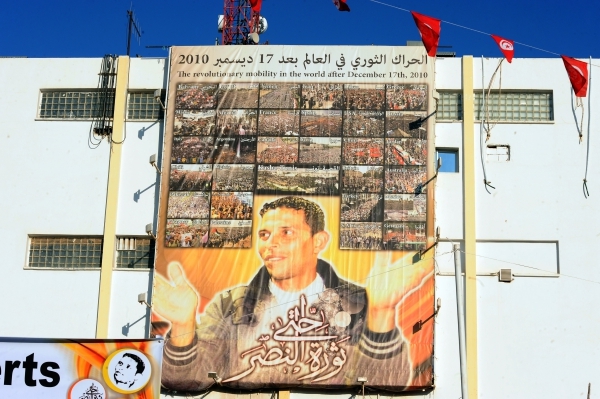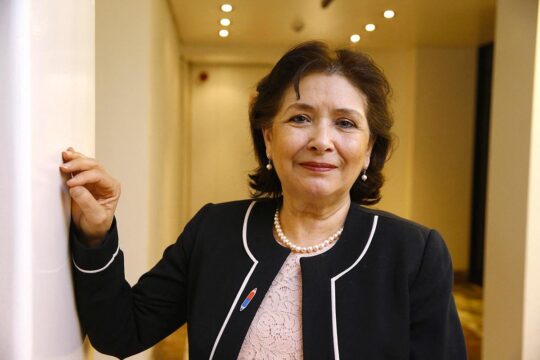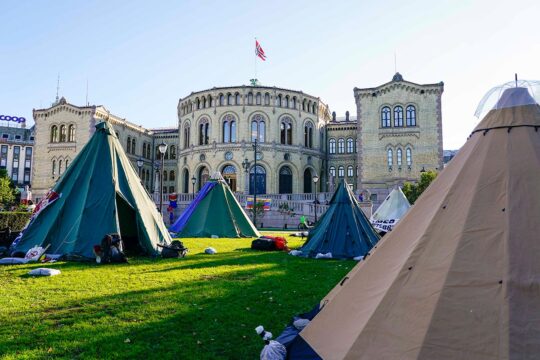They witnessed the spark that ignited the Tunisian revolution.
They saw everything, the unfolding of the whole drama that took place on the main street of Sidi Bouzid exactly five years ago. They witnessed the self-immolation of Mohamed Bouazizi here in front of the administrative buildings of this town in central-west Tunisia (265 km south of Tunis), on the morning of Friday December 17, 2010. They are the small street traders, about a dozen of them, who continue to set up their stalls each day under the fig tree in the town centre to display their sandwiches laced with harissa, boiled eggs, tea and fruit, in this place which is still officially “unauthorized for trading” by the municipality. They remember...
“He set himself alight before our eyes”
“Mohamed was 26 and we called him by the affectionate nickname of Besbouss [hugs and kisses],” recalls Fayçal, who is pushing a wheelbarrow full of soft drinks just like Bouazizi’s. “He was a smiling, friendly, helpful guy and a zawali [poor person] like all of us. He scraped a living to survive from day to day and meet the needs of his numerous siblings. He doused himself with a canister of inflammable liquid and set himself alight before our eyes, before we could do anything to save him, and we were in shock.”
This desperate act came after Fédia Hamdi, a woman working for the municipality, confiscated his scales and the few kilos of apples and bananas he had bought that same December 17 morning in the Sidi Bouzid wholesale market.
“Fédia and Mohamed knew each other,” adds Ali, on whose stall are piled packets of cigarettes brought here through one of the numerous contraband networks with Algeria. “It was not the first time they argued. Fédia was known for the intransigent way she applied the law against unauthorized vendors. Mohamed was stressed that day. He probably insulted her.”
Nobody listened to Bouazizi despite his pleas, neither the mayor’s office nor the prefecture.
“The scales did not belong to him. They had been lent by a friend, that’s why he was so upset,” says banana seller Naceur. “He absolutely wanted them back.”
The wrong done to Sidi Bouzid
In this isolated, male-dominated part of the country steeped in tribalism, the woman municipal officer’s “affront” to Mohamed was intolerable. The carbonized body of Mohamed, first victim of a revolution that was about to take off, was transported to hospital emergency. A rumour was kindled and spread like wildfire to all corners of this town of 40,000 habitants, with its myriads of noisy, smoky cafés full of men: “Fédia Hamdi hit Bouazizi!”. The rumour, fuelled by reports in foreign media (including Al Jazeera and France 24) that Bouazizi was an unemployed graduate (he did not even get a high school diploma) created in Sidi Bouzid a feeling of general revolt against the government, along with layers of anger and frustration at the way development policies had neglected this region since Tunisia’s independence. Even though Fédia did not hit Mohamed – this was a finding of her acquittal on April 19 --, at that point people felt they needed to rally the population around the victim, who quickly became an icon. As a result, starting on December 20, 2010, demonstrations started in the small nearby towns of Meknassy, Mezzouna, Jelma, and Menzel Bouzayane, then the uprising spread everywhere.
The Disposessed
Behind the narrow shaded pavement where the street traders crowd, graffiti on the walls recalls what happened in the days following January 14, 2011, when ex-President Ben Ali fled into exile. Ben Ali, throughout his 23 years in power, had ruled the country with an iron fist, with every corner of the country policed and freedom of speech suppressed. After he fled, there was an explosion of free speech, which had previously been possible only behind closed doors. Street art on these walls has since become a favourite place for the population to express themselves.
“This place belongs to the free people of Sidi Bouzid. Long live the proud youth of Sidi Bouzid!” reads a message on the walls of the Development Ministry, which was torched in one of the civil disobedience campaigns or protest marches against various Tunis-appointed governors in Sidi Bouzid during the turbulent years of 2011, 2012 and 2013. The revolutionary flame continued to burn during those years in a region known also for its anti-Islamist vote in the 2011 and 2014 elections.
Other nearby walls speak of a harsh reality. This overwhelmingly agricultural region (70% of the population live in rural areas) has fertile soil, a unique micro-climate and abundant water basin, but its fruit, vegetables and oil leave every day to be processed elsewhere in the big towns of the coast, leaving thousands of unemployed (25% of the population, according to statistics).
“You robbed us of our wealth, don’t rob us of our Revolution!” Bouzidians have written in large Arab lettering. Another message seeks to correct the date of an event marked by a festival the town organizes every year. “The Revolution for freedom and dignity didn’t happen on January 14, but on December 17, 2010.”
Primary school teacher Abd Errahmane sips hot tea under the fig tree and says: “History usually remembers the date the revolution was sparked. Why do they continue to date ours from January 14, the day it reached the capital?”
Thanks to the decline of State structures, it is true that the mobile street traders are no longer persecuted by municipal officers. Fearing reprisals from the population, the enforcement officers patrolling the ground have disappeared in the two years following Bouazizi’s suicide and in 2013 were integrated into the police. As for the street traders, they are soon to be moved to the big market currently under construction a few metres away… around the street named after the Revolution!
Bitterness and disappointment
It is 10 o’ clock in the morning. The main street, which along a 3-kilometre stretch houses all the regional and municipal buildings and drives the taxi drivers crazy, has now been re-christened Avenue Mohamed Bouazizi (formerly Avenue Bourguiba). The post office has hung over its façade a giant poster of a smiling Bouazizi with arms open as if to embrace posthumous glory. Numerous national guard roadblocks remind us that Sidi Bouzid has been under high surveillance for the past two years, since the region is close to mountains where Jihadist groups hide. And the unattractive town centre that visitors to the south cross hurriedly is as full of traffic jams as ever.
The famous Café Samarkand, fief of Ben Ali opponents during the turbulent years, is thick with people. They are mostly young, unemployed men, seated over a coffee or with heads bent over a game of cards.
Hassen, 36, is an unemployed graduate who took part in night raids against the Public Order Brigades that invaded the town on December 18, 2010 and especially on December 19 when 8,000 men with batons and tear gas were sent as reinforcements from Sousse, Tunis, Sfax and Gafsa to try and suppress the rising anger. But the young insurgents got the better of the Brigade, waging battles against them every evening in the maze of tiny streets of their neighbourhoods. Hassen expresses the same disappointment and bitterness that can be heard all over Sidi Bouzid. “Usually the people who lead a revolution then take power. But that is not what happened here,” he says. “The Islamists returning from exile stole our revolution, as did everyone else. The political bigwigs left us nothing and gave us nothing. Everything is like it was before, if not worse. Ask the young people in this café. Very few of the youth went to vote last year. We have lost trust.”
A man comes up and nods in agreement. He is one of the workers on the temporary employment projects set up by public authorities, dating from the time of the old regime and paid 240 Dinars per month (about 110 Euros). His name is Fayçal, he is 41 and single with four mouths to feed and “enough debts to make you burn yourself alive”. He is bitter. “We had been waiting for the revolution a long time, to get rid of the thieves,” he says. “But now the number of Mafiosi is increasing exponentially. That’s why the cost of the least hospital care is three times the official rate and why there is more corruption everywhere, in the municipality, agricultural administration, the police…”
Corruption, a legacy of the former regime that has become a structural problem of the local economy in these transition years, is more visible here than in the capital. It is now blatant. A.B, an expert on small and medium-sized enterprises, is working on a development project in Sidi Bouzid for an international development agency. “To dig a well on his land, a farmer must pay a bribe of between 2,000 Dinars [900 Euros] and 3,000 Dinars [1,600 Euros]. To transform the statute of the land from agricultural to industrial he must pay up to 30,000 Dinars [14,000 Euros], depending on the size and location of the land. Those who refuse to go along with this corrupt system get their cases blocked, stymied by the need for numerous authorizations, or simply shoved into bureaucrats’ office drawers. Nevertheless, given the symbolic importance of this town, international organizations such as the ILO, UNIDO, UNDP and USAID still keep starting development projects in Sidi Bouzid.”






